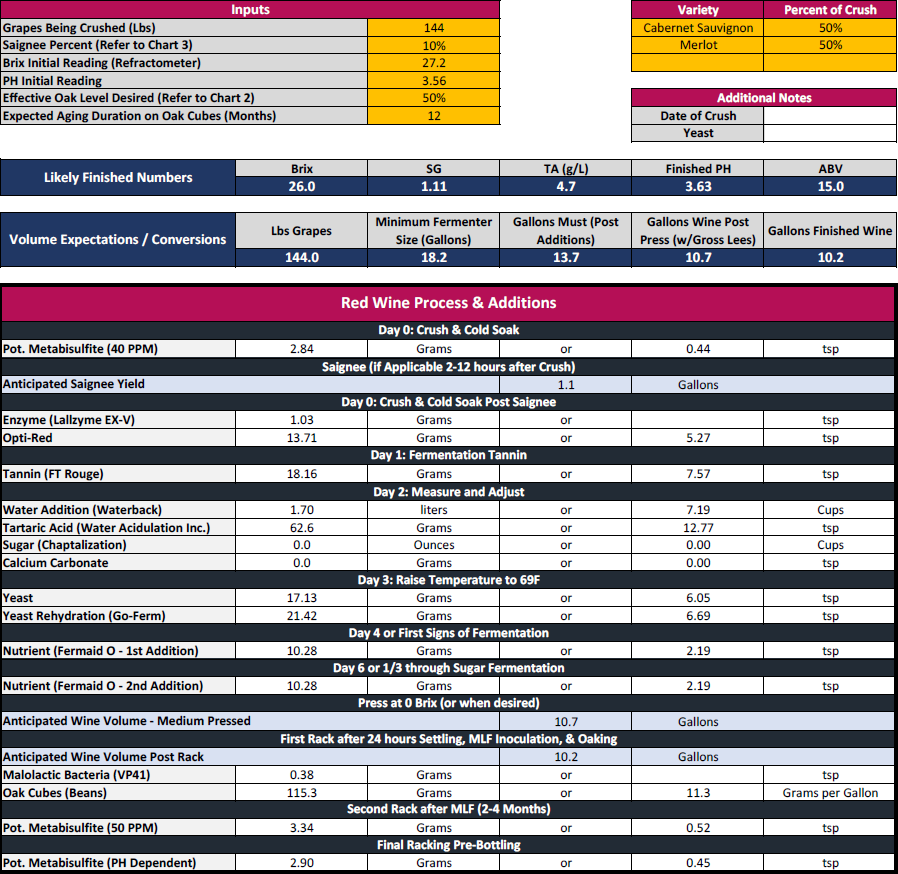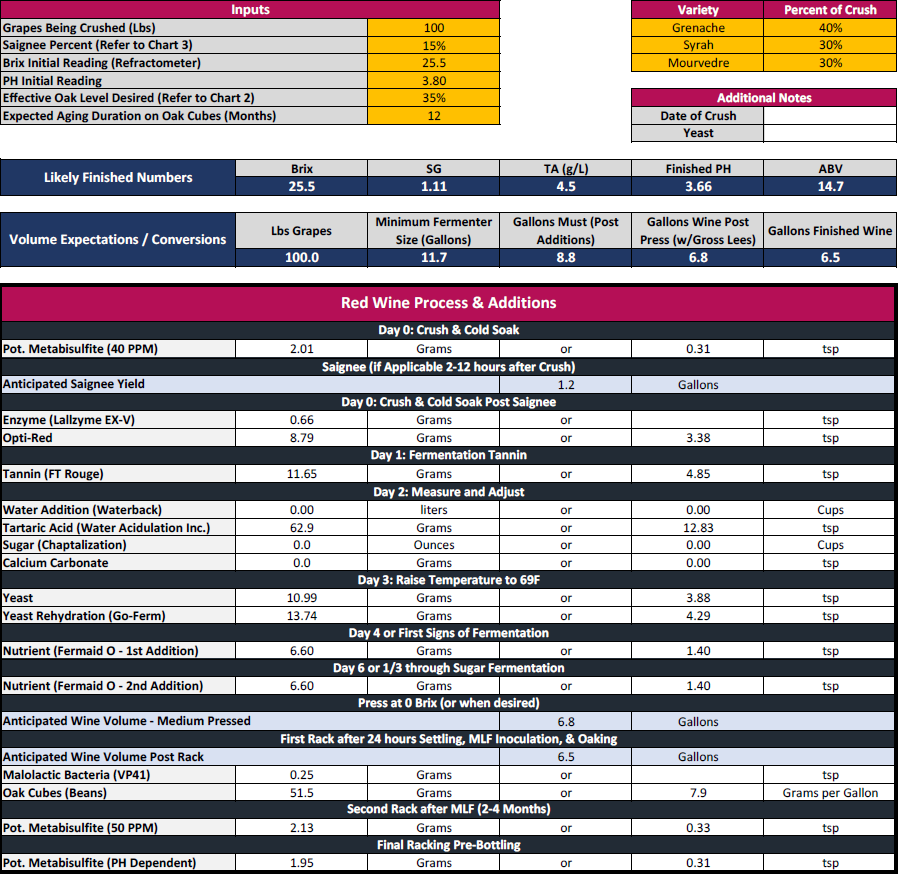
Are you a home winemaker and struggling with what additions to make to your grapes? Are you, like most of us, without $10K dollar instruments and the technical know-how of professional winemakers? Even with those benefits, it seems the complexity of red winemaking has all of us in a permanent state of confusion. It seems there are just too many variables, with too much variation, with all being utterly co-dependent.
Have you ever found yourself scratching your head with these questions:
- How much wine can I expect from my grapes?
- What size fermenter do I need?
- How much acid do I use to achieve a final PH goal?
- How is my TA (total acidity) reflected by my PH?
- How much sugar (chaptalize) do I add to increase my SG?
- Can I reduce my acidity? Or do I even need to?
- Are there maximum acidity or sugar additions given my starting point?
- How do I replicate commercial barrel programs with Oak alternatives?
In a struggle to answer these, and many more questions myself, I spent the past several years reading copious amounts of books, speaking with winemakers, performing trial and error, and producing vast amounts of wine. From this experience base I have produced a simple tool to turn your grapes into the best wine they can possibly be. I also have the small benefit of being a trained analyst and statistician, so perhaps I’m finally putting my skills where they belong. So while there is certainly truth that winemaking is complex, with my downloadable tool it doesn’t have to be! Just answer 6 basic questions (highlighted in orange within the examples below) and you can be on your way to making great wine from fresh grapes. Best of all, all you need is a PH meter and hydrometer!
Below are some examples from the model as well as worksheet explanations:
Example 1:

Example 2:

Varietal Chart Example to Help you Understand Desired PH and Brix:

Oak Phenolics Worksheet:
To arrive at an “effective oak” percentage, I encourage you to read through winemakers notes on some of your favorite wines. Most wines will provide a very specific oak routine, and can be as general as “24 months in 100% French Oak, 50% new”. Or as complete as “12 months in 100% American Oak, 50% new, 30% once used, and 20% used”. Either way, by inputting the barrel routine into the below yellow boxes, an “effective oak” percentage is automatically calculated. You can then carry that number over to the model and the oak cube dosage is automatically calculated to provide you with the same level of oak phenolics as your favorite wines. Below is a snapshot for your reference.

In order to receive full access to this model, and gain the immediate knowledge of professional winemakers, please feel free to download from the link below. Please also consider a small donation, as building this model required an incredible amount of time, research, and expense!
If you like this model, and if it helps you in your endeavors to become a great winemaker, I would greatly appreciate your feedback! Constructive criticism is always encouraged.